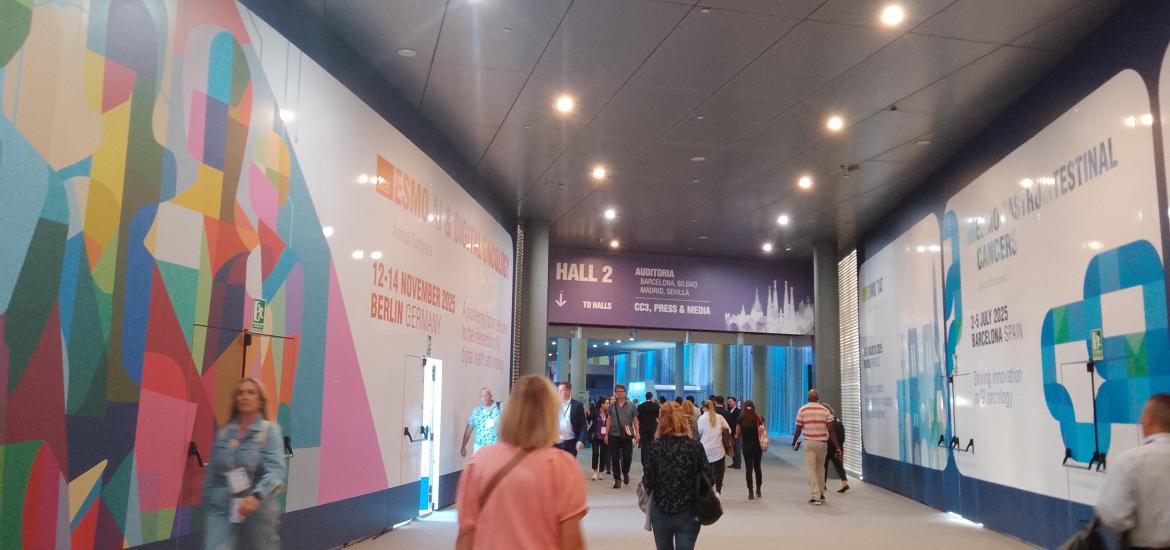
ESMO 2024 – NiKang’s case for a better Welireg
The company’s HIF-2α inhibitor impresses on efficacy, but its long half life raises eyebrows.
The company’s HIF-2α inhibitor impresses on efficacy, but its long half life raises eyebrows.

The private US biotech NiKang Therapeutics might have a viable HIF-2α inhibitor in NKT2152, but the molecule’s strange pharmacokinetics – in particular an unusually long half life – will require a thoughtful approach to dosing.
ESMO on Friday saw presentation of data from a phase 1/2 study in heavily pretreated renal cancer patients, and a 20% response rate across all 100 evaluable subjects was said by the discussant to be worthy of further investigation. But, with hypoxia being a known toxicity of HIF-2α inhibition, NKT2152’s propensity for unusually long patient exposure could be a concern.
The study’s presenter, MD Anderson’s Dr Eric Jonasch, said NKT2152 had a half life of 38 days. This was described as almost antibody-like, and highly unusual for an oral small molecule.
Modified dosing
This pharmacokinetic property has already caused the investigators to modify dosing: the trial’s dose-finding stage looked at 50-300mg daily dosing in 15 patients, but then tested a loading/maintenance regimen in a further 45. The latter comprised 100-200mg daily for seven to 28 days, followed by 50mg daily or 100-200mg weekly.
The efficacy results weren’t split out by these groups, but the purpose was clear: the daily regimen caused significant accumulation of drug, and loading/maintenance was intended to achieve therapeutic exposure rapidly, and then maintain this. Loading/maintenance is now being used in the trial’s phase 2 dose-expansion stage.
Across all 100 patients, including 43 treated in dose expansion, the ORR was 20%, with activity said to be observed across dosing levels. A promising sign was that in the 57 dose-escalation patients, who had been on trial longest, the ORR was 26%; as such there was potential for antitumour activity to rise further with even longer follow-up, suggested the ESMO discussant, Memorial Sloan Kettering’s Dr Jonathan Rosenberg.
Welireg window
HIF-2α inhibition has been validated by Merck & Co’s Welireg, approved for post-PD-(L)1 and VEGF tyrosine kinase inhibitor renal cell cancer on the back of the Litespark-005 trial. In the NiKang trial nearly all patients had received prior VEGF and immunotherapy, and 28% had also seen an mTOR inhibitor.
Litespark-005 showed a 23% ORR, so the NKT2152 data are at least in line with that, and controversially it didn’t show Welireg to give an overall survival benefit. Moreover, grade 3-4 hypoxia was 10% with Welireg, while grade 3-4 anaemia was seen in 29% of patients, and these numbers could present a window of opportunity for NiKang.
Hypoxia was seen in 25% of NKT2152 patients, though at grade 3 in just two. Fatigue and hypoxia were dose limiting in two subjects, both in loading/maintenance. NKT2152’s half life being as long as it is, Rosenberg wondered whether dose reduction or discontinuation would have a meaningful effect in a patient suffering a hypoxia episode.
The NKT2152 data will be closely watched by Arcus, which is a recent entrant into HIF-2α inhibition with casdatifan. This also has been said to look better than Welireg, though so far only on the basis of a handful of case reports; interestingly, pharmacokinetic considerations have been prominent with casdatifan too, with Arcus claiming that similar exposure to Welireg is possible with a much lower dose.
Merck acquired Welireg through its $1.05bn acquisition of Peloton, so now at least two companies are making a case that the big pharma could have got something better.
1197













